Insights from the Environmental Sustainability Programme at Whenua Iti Outdoors. First published in Education Outdoors New Zealand’s Spring 2024 issue of Te Whakatika: The Aotearoa New Zealand Professional Practice Journal for Outdoor and Environmental Learning.
At Whenua Iti Outdoors (WIO), Rosey Joyce (Bachelor of Sustainability and Outdoor Education), the lead instructor for the Environmental Sustainability programme, integrates a deep appreciation for nature into her teaching. While the curriculum for the 12 secondary students who attended this year’s programme focused on key learning outcomes, Rosey’s approach centres on fostering a sense of wonder and awe for the natural world. As Marketing and Communications Manager with a deep interest in our environmental programming (holding an MSc. in Geography myself), I saw the student feedback that resulted from this programme and sat down to interview Rosey to find out more about how she was achieving these outcomes through her delivery practice. Rosey was happy to share her process with me for the purpose of writing this article.
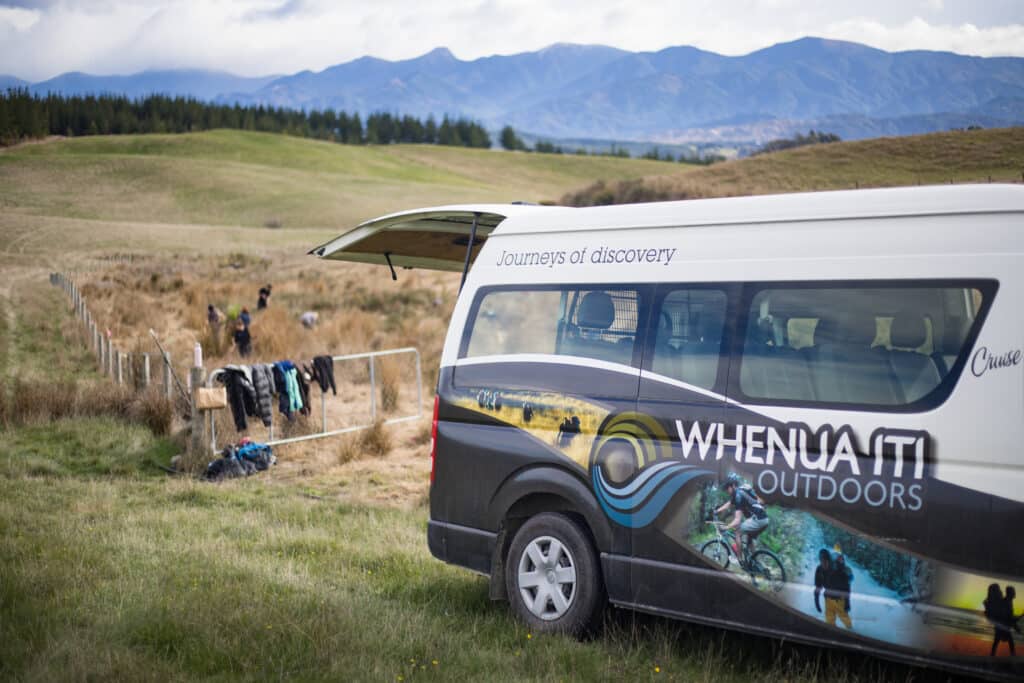
The Environmental Sustainability programme’s curriculum combines environmental sustainability, conservation practices, and mātauranga Māori through field based activities. Over four weeks, delivered as four-day block courses across the first two school terms, students earn 20 NCEA Level 3 credits. Rosey thoughtfully weaves activities, discussions, and reflections into the curriculum to encourage students to express their feelings for nature openly. She shared the following key design principles that underpin this programme.
Stepping Outside the Comfort Zone
Students from Nelson, Tasman, and Marlborough schools are brought together for the first time, with an emphasis on the need for establishing good teamwork and building bonds from the start. Activities testing communication, leadership, and teamwork skills help students understand each other’s strengths and weaknesses. Rosey recounted that she initiated a deep discussion early in the programme to challenge the students to express themselves and the connection they felt with nature. Rosey reflected on the students’ response to this discussion, and acknowledges that “initially, I could see that I made them feel a bit uncomfortable, but that was okay. The idea was to challenge them to be okay outside their comfort zones – not just physically, but emotionally too. I wanted them to feel free to express their love of nature and normalise an emotive reaction to the natural world.”
Kolb’s (1984) Experiential Learning Theory suggests that stepping outside our comfort zones fosters deeper learning and development. Rosey agrees, saying that encouraging students to express themselves also meant challenging herself and her co tutors to show their passion for nature consistently throughout the programme to help reinforce this learning to the students.
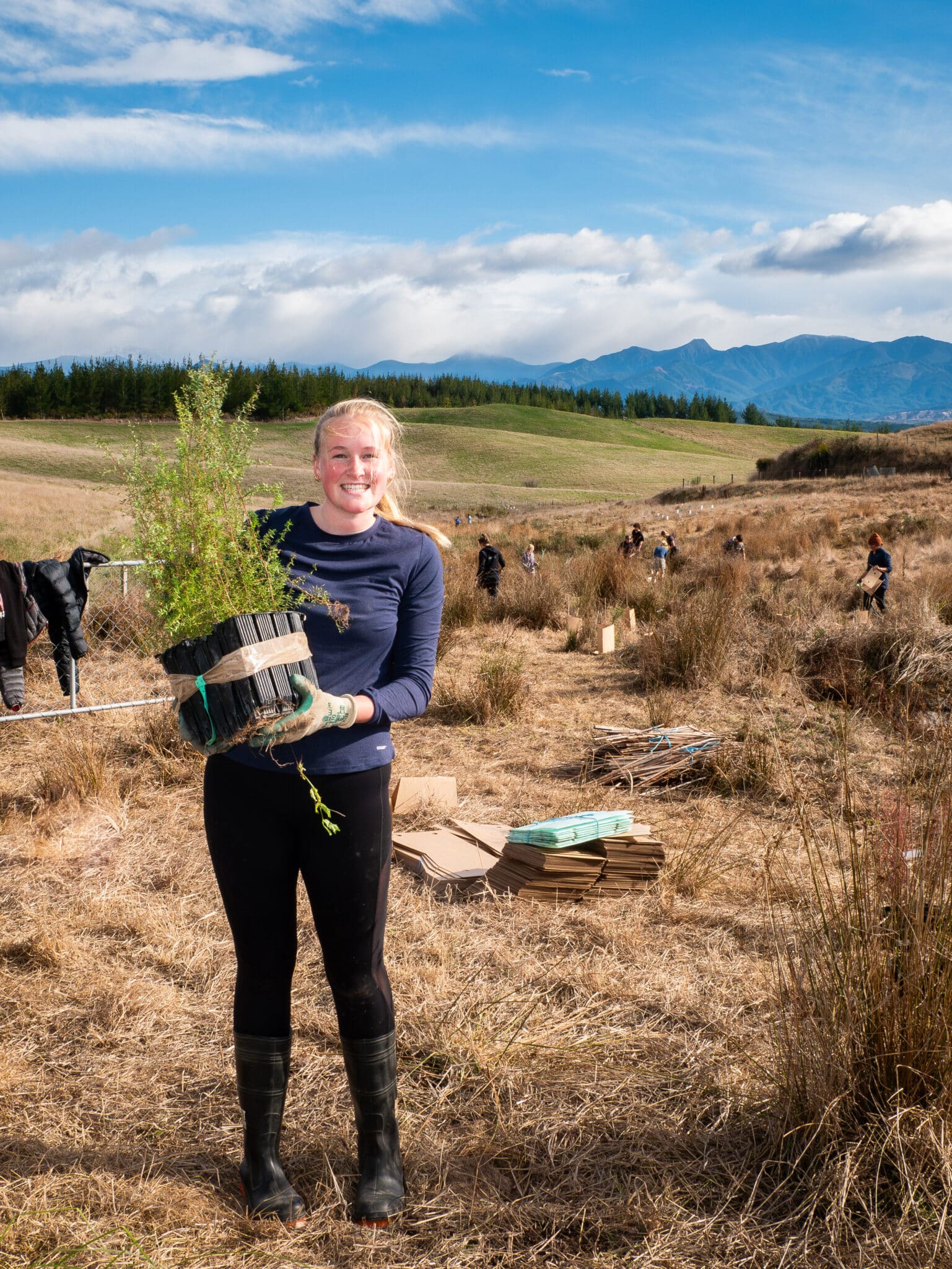
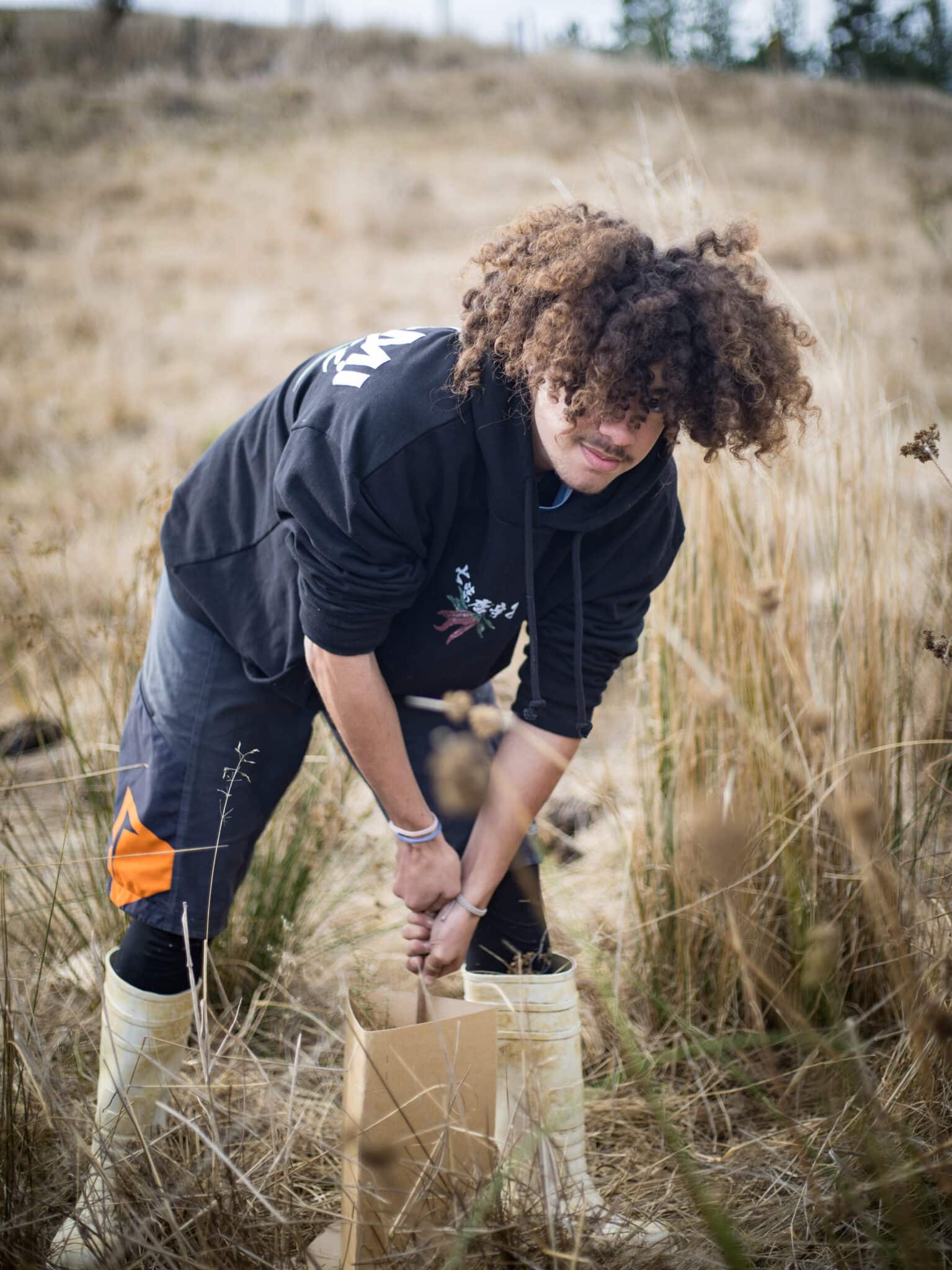
Taking Ownership
As part of the programme curriculum, students engage in activities such as predator control, trapping, or planting to support local conservation initiatives in Te Tauihu, particularly in the Moutere and Motueka catchments in Tasman District. It’s an important component of the programme to connect students with local initiatives. This year, Rosey wanted to extend the students, by having them develop a new local trapping and planting project in the Moutere catchment. After consulting with landowners, the students designed a new trapline, then planned and started the planting project, selecting appropriate native species. They planted 600 eco-sourced native species from the Whenua Iti Community Nursery. Rosey emphasised giving students ownership to demonstrate their potential. “I wanted to show them what was possible,” she said. The students calibrated the traps, then strategically positioned the trapline to protect their plantings and enhance biodiversity. “It’s empowering for the students to see how much they can do and what they are capable of,” Rosey added.
Authentic Co-Design
The four-week programme allowed for authentic student involvement in its design. Rosey uses a process of planning the first two weeks before the programme starts and then adjusting the final two weeks based on students’ interests and strengths. This strengths-based approach encourages students to voice their opinions and showcase their skills, allowing space for personal development and for their leadership skills to evolve. Rosey explained that “adapting to the students on the programme is a real strength. They voted on what they wanted to do, making the experience incredibly valuable.” This approach helps students to feel heard and valued, boosting their commitment and engagement, with 80% (n=10) of surveyed students saying this programme helped them to feel valued and heard.
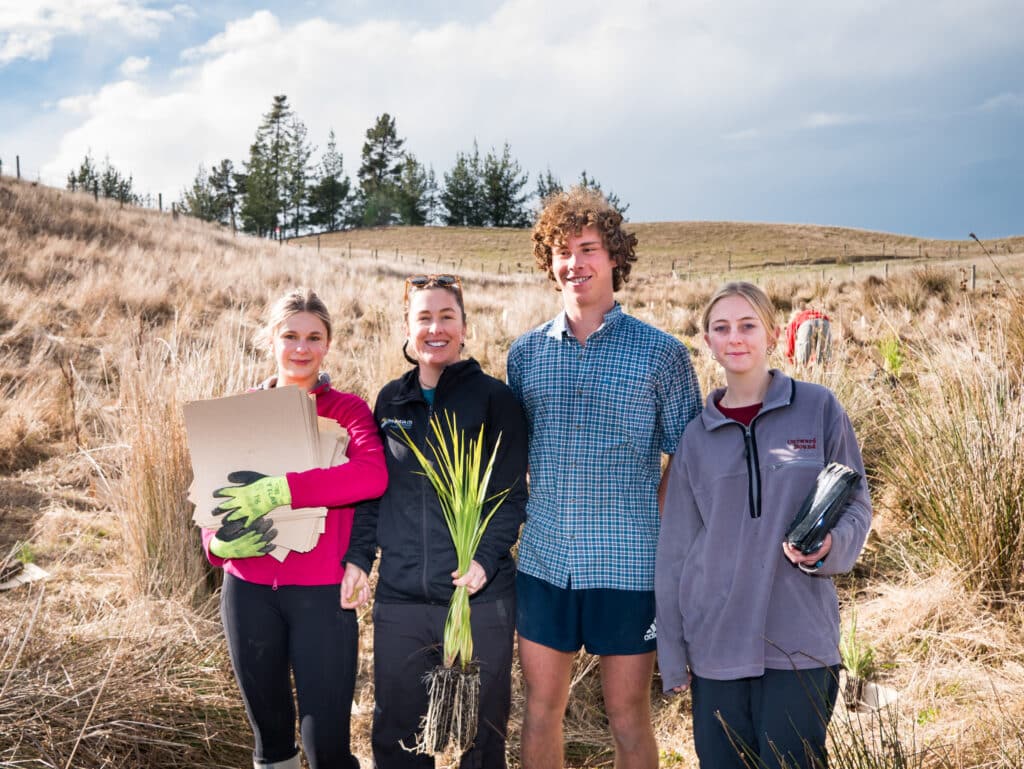
Instructor Rosey (second from left) with students on the Environmental Sustainability Course at a riparian planting project.
Exploring Potential Pathways
Connecting students to various avenues for contributing to environmental sustainability, whether at home, through volunteering, or in careers, is a key aspect of the programme. “I wanted students to see the different ways to engage their passion for nature, from weekend conservation projects to careers in science and research,” Rosey explained. Students interacted with community members and engaged in conservation projects with local groups, the Department of Conservation, and at Kaiteriteri Mountain Bike Park, where they applied herbicide to 600 wilding pines and removed almost as many. A visit to the Golden Bay Sustainable Living Centre helped students consider personal sustainability, such as identifying edible weeds from the community garden.
Leading by Example
Teenagers are perceptive. “If you talk about environmental sustainability while drinking from a single-use plastic cup, they’ll notice,” Rosey said. She was aware of the need to lead by example, encouraging students to question and come up with ideas to improve systems they interacted with. Rosey related how “the students initiated a discussion about using disposable plastic gloves for poisoning wilding pines. The students questioned why we were using disposable gloves on an environmental programme, seeking alternatives – challenging when working with poisons but great to see them questioning common practices.”
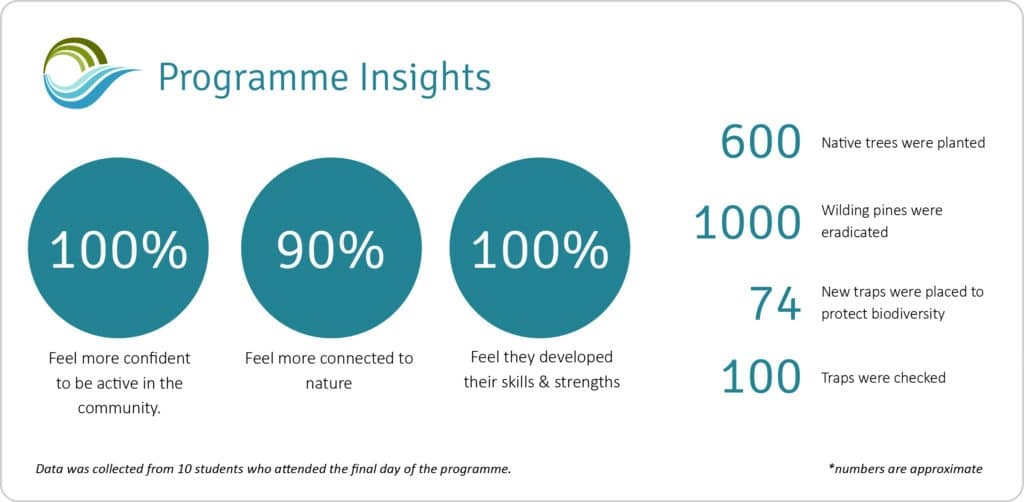
Figure 1. Survey outcomes. The Environmental Sustainability programme that Rosey has developed for Whenua Iti Outdoors exemplifies how outdoor and environmental learning practices can incorporate approaches that allow students to take ownership, be authentically involved in co-design and help them explore potential pathways can benefit the students. In this way, a stronger connection for nature is nurtured, while most importantly, empowering them to make a difference.
What did the students think?
A survey of the student participants on the final day of the programme provided some insights. “I loved it. Especially the practical experience that you don’t get in the classroom and actually making a difference. Instead of talking about it, we were doing it,” noted one student from a local high school. Another student, from the same high school, enjoyed the new relationships she made, “It has been good to meet up with like-minded people.” A further participant found it good talking with people who have a career that they are passionate about and a career that makes a difference. The survey (see Figure 1) revealed that 100% (n=10) of the students agreed the programme has helped them to want to learn and 90% feel more connected to nature because of the programme. Importantly, 100% of students felt more confident to be active and involved in the community because of the programme. They all agreed they were positively influenced by the programme, planning to start new hobbies, be more active outdoors, volunteer, pursue new studies, or consider a new career path. One participant has contacted the landowners they worked with on the programme and volunteered to continue checking the trapline and joined her school’s environmental group. A second participant signed up for further study.
References
Kolb, D. (1984). Experiential Learning: Experience as the Source of Learning and Development. Prentice Hall.
This article was first published in Te Whakatika, EONZ Issue 43, Spring. Read the whole edition here.